Mysterious Footprints in Spain Were Made 300,000 Years Ago

Mysterious Footprints in Spain Were Made 300,000 Years Ago
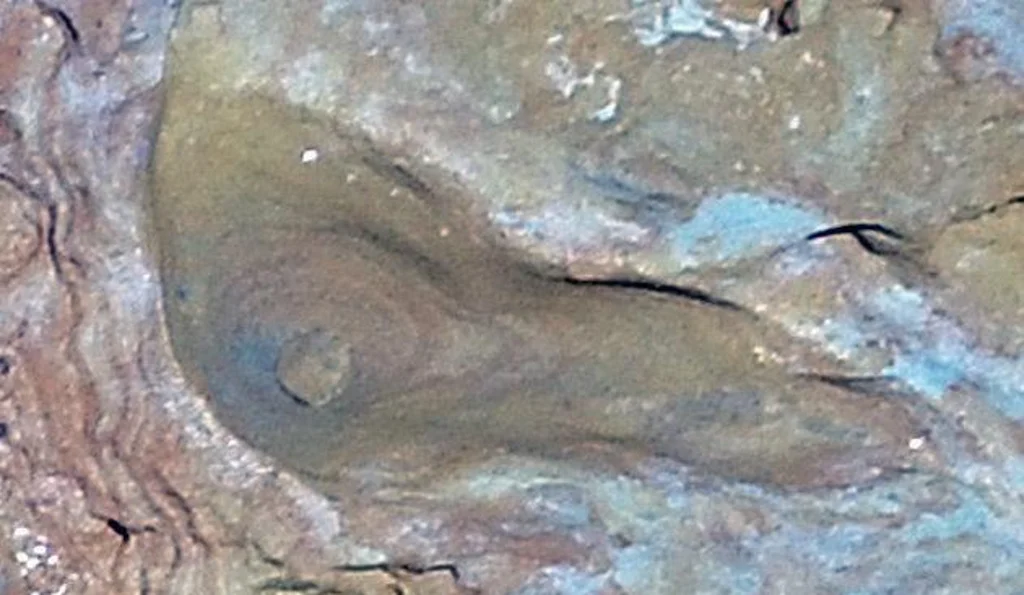
Who exactly was living in Andalusia almost 300,000 years ago? Human-type fossil footprints found two years ago in southern Spain were thought to be 106,000 years old and to have been made by Neanderthals. But they’re three times older – about 295,000 years old – according to new research. Dating them to the Middle Pleistocene reopens the question of who made the tracks explains palaeontology Prof. Eduardo Mayoral of the University of Huelva and colleagues in Nature Scientific Reports.
After the footprints were first discovered in 2020, doubt began to surface about their date because layers on top of them were dating older. New samples were taken from sediment layers in the cliffs of El Asperillo, in the process of which more footprints were found. This raised the number from 87 to 236, Mayoral says.
About a tenth of the footprints are decently preserved, the researchers say. The samples’ analysis was done by radioisotopes technician Jorge Rivera from the University of Seville, who reached a date of 295,000 plus or minus a 17,000-year margin of error.
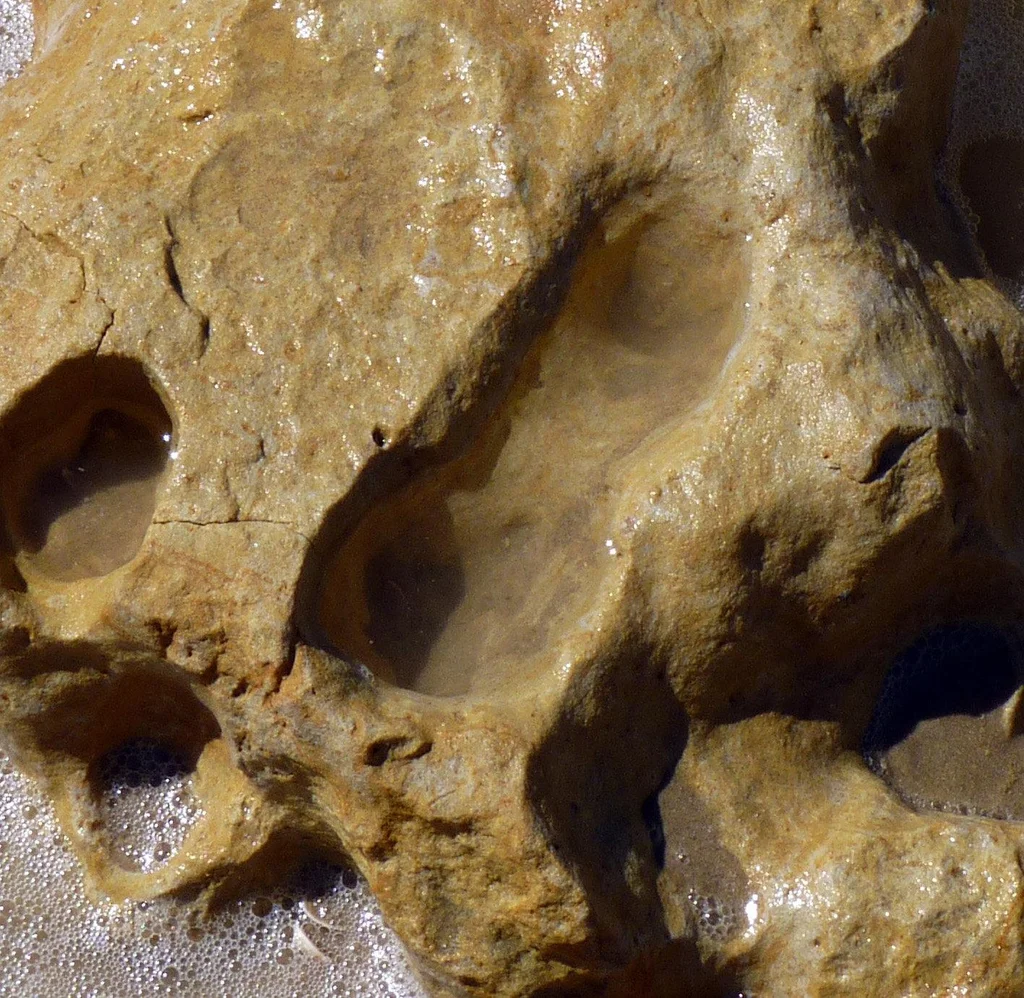
The footprints were initially discovered by analyzing orthomosaic images snapped by drones flying at different heights, Mayoral explains.
Iberia was a little different back then: Some 300,000 years ago, sea level was 60 meters (197 feet) below what it is now and these hominins weren’t walking on the beach: they were walking in a mudflat 25 to 30 kilometers from the coast, Mayoral says. Their environs were an extensive coastal plain with large dune systems and the climate was getting chillier. But everything is relative, and in balmy southern Iberia the weather would still have been lovely: relatively temperate and humid, with abundant freshwater and vegetation and animals to eat – tracks have also been found of straight-tusked elephants, aurochs and boars.
There went a chicken
Looking at tracks, it’s pretty easy to distinguish a dog or chicken from an elephant. But go tell a golden retriever’s paw print from a husky’s. In that, human variants are like dogs. Footprint-wise, the span of humanity’s evolution is encompassed in just two definitions: Praehominipes laetoliensis, based on footprints made 3.6 million years ago in Laetoli, Tanzania, apparently by Australopithecines walking through volcanic ash; and Hominipes modernus, based on Homo sapiens’ footprints. Australopithecines were smaller in body and brain and had longer, more curved hands and feet; their track could not be mistaken for a modern human’s.
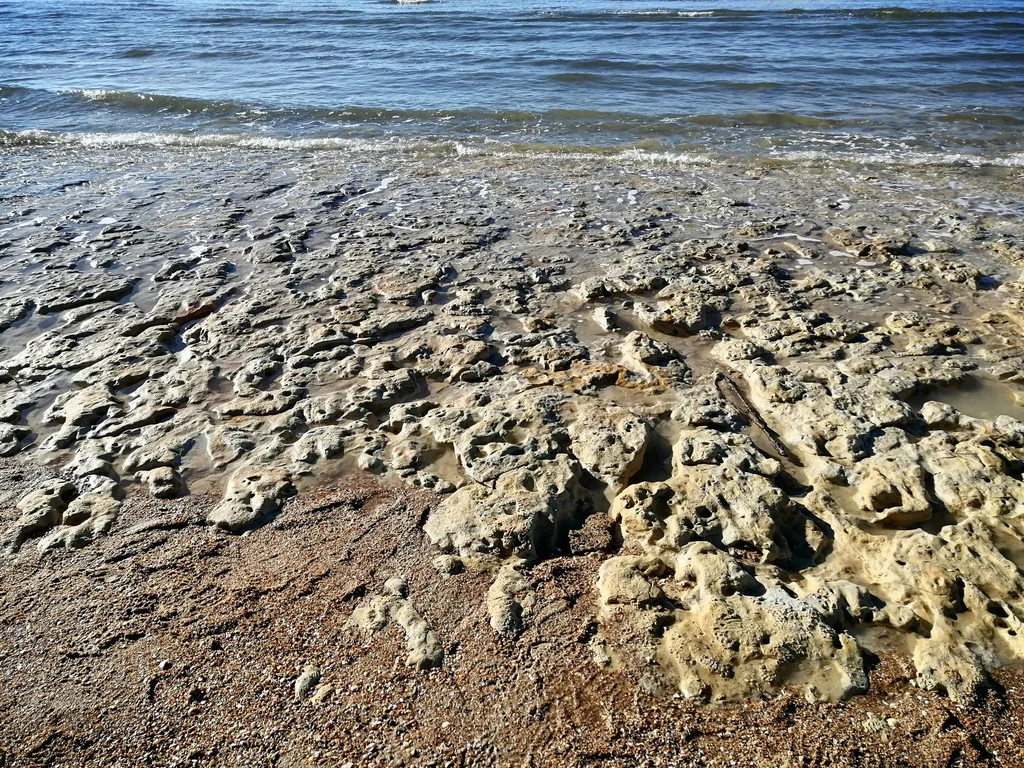
But within the category of sapiens-like feet are a wide range of human variants, which means we couldn’t tell a Neanderthal’s footprint from our own or from erectus’. Identifying the maker of footprints in deep prehistory must rely on other evidence, from bones to tools – and, crucially, chronological context. Hence the importance of the dating of the Andalusian track to about 300,000 as opposed to 100,000 years ago.
Note though that finding the track in Andalusia from 300,000 years ago doesn’t mean the walkers just got there, as some assume. They are not evidence of arrival; they are evidence of presence. Hominins or human variants could have been there for eons without serendipity preserving their spoor.
So who could they have been? We know that hominins were running around Eurasia for over 2 million years, going by a find of stone tools in China that have been dated to about 2.1 million years ago (and bear close resemblance to tools similarly dated in Africa). Actual hominin bones from 1.8 million years ago were reported from Dmanisi, Georgia. (Almost miraculously, some genetic information was gleaned from a hominin tooth in Dmanisi, but nowhere near enough to tell us whether this creature really was in our ancestral line.)
Yet even though actual bones were found in Georgia, some classify them as Homo erectus and others insist they couldn’t have been, because they were too small in both body and brain – maybe they were Homo habilis.
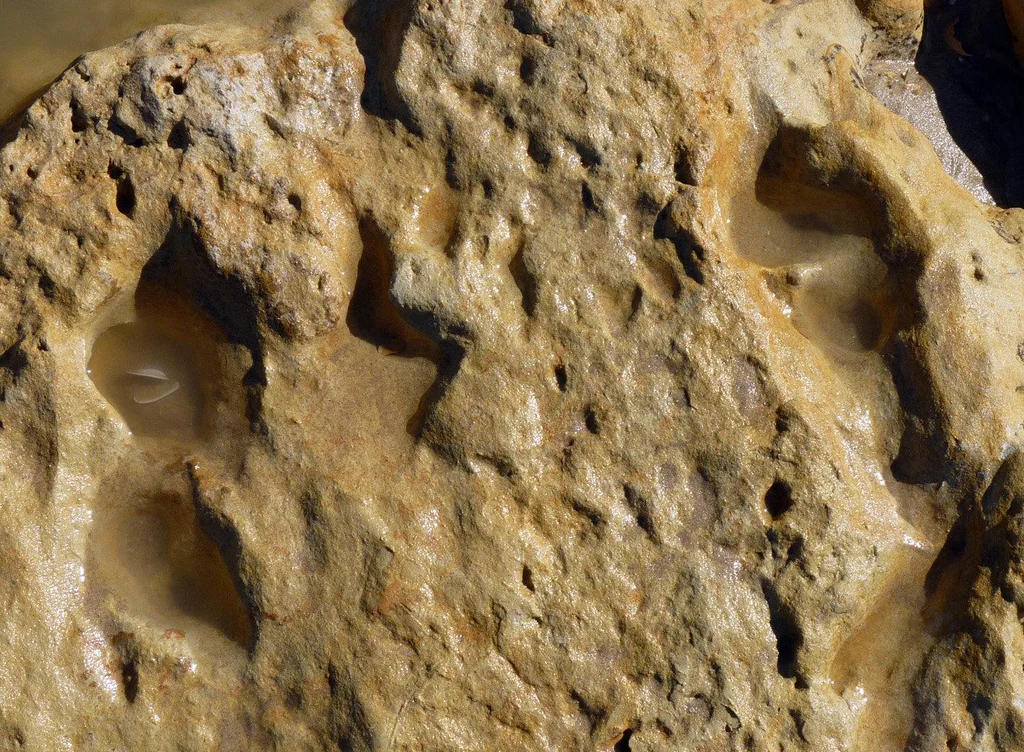
Back in Spain, a hominin jawbone, crude Oldowan-style tools and ample evidence of defleshed bones were found in the Atapuerca mountains and dated to about 1.4 million years ago, making it among the oldest hominin fossils to be found in Western Europe. And who was that? It has been called Homo antecessor, but the argument over what that might have been rages on.
Now we have footprints on a mudflat some 300,000 years ago (together with animal tracks, incidentally). Apparently not Neanderthals but possibly their precursors, the team suggests. Why?
Call it Neanderthal
Mayoral explains the thinking. “The ‘typical’ Neanderthals would have appeared 230,000 years ago, although some authors place their appearance at 300,000 years ago,” he says. “When we move into the ‘300,000 years’ barrier, many authors prefer to speak of pre-Neanderthals or archaic Neanderthals, among other things, because not all anatomical traits evolved at the same rate and probably during the Middle Pleistocene there were polymorphisms in different characteristics with different percentages of appearance. All this complicates a direct and infallible assignment that they could be ‘classical’ Neanderthals.”
Could there be other candidates? Maaaaaybe.
“European hominin fossils from the Middle Pleistocene belong to the Neanderthal lineage – either Homo neanderthalensis or Homo heidelbergensis sensu lato,” he answers. “However, a more precise attribution seems complicated as there are many debates about this lineage’s evolution and the taxonomic definition of Homo heidelbergensis. Different models have been proposed for the development of the Neanderthal lineage. This question is still far from being resolved, given the lack of the fossil record and the new and more complicated evolutionary picture provided by the latest ancient DNA studies.”
Since hominins (of undetermined types) were running around Eurasia for well over a million years before whoever they were walked on the beach, how surprising is it to find the footsteps in Spain from the Middle Pleistocene? Even if they’re the only footsteps ever found from this specific period in the Middle Pleistocene, which they are.
“Between 400,000 and 500,000 years ago, during the Pleistocene, archaic humans separated from other groups of the same period living in Africa and East Asia, settled in Eurasia and there began to develop the characteristics that define the Neanderthal lineage,” Mayoral explains. “In this respect, it comes as no surprise.”
To date, he says, the skeletal record from the Middle Pleistocene is sparse and heterogeneously distributed, both spatially and temporally – which means there is practically no data. As for footprints, these are the first from that specific period and, yes, they do indicate that representatives of this lineage (whatever it was) had already been distributed throughout southern Europe without problems.
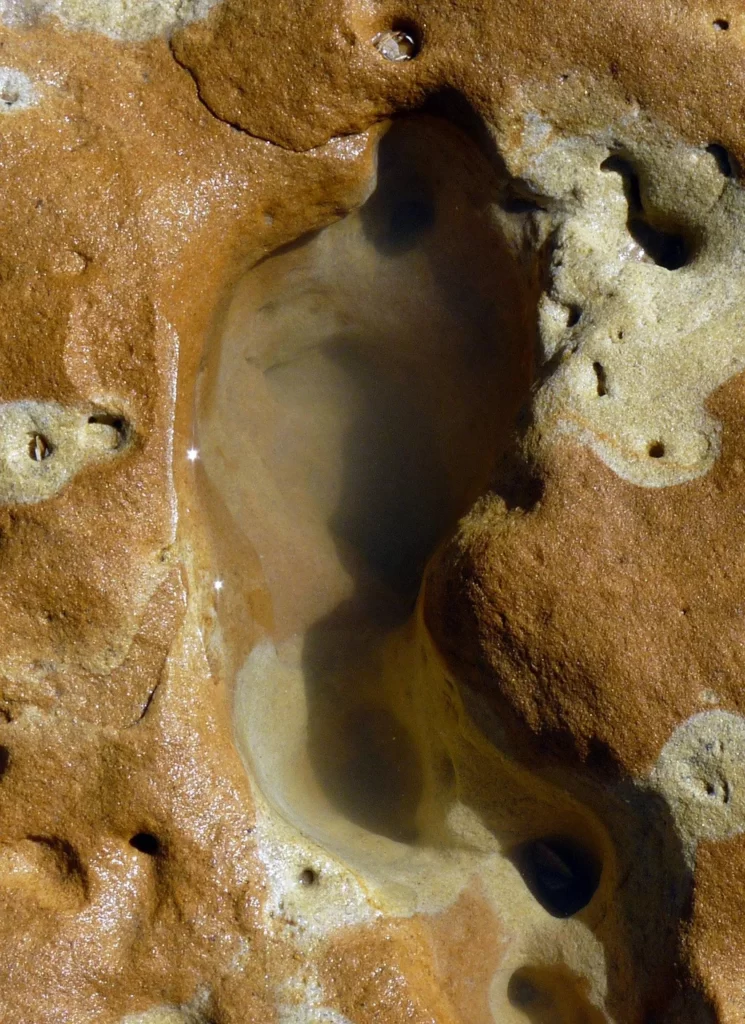
At least we can be quite confident that they weren’t made by early Homo sapiens. It is becoming clearer that early modern humans did reach Israel and Greece around 200,000 years ago, i.e., way before the sapien’s exit from Africa that resulted in our species. But while the latest evidence indicates that sapiens began to evolve at least 300,000 years ago, that was in Africa and it didn’t beam over to Spain.
Prof. Israel Hershkovitz of Tel Aviv University, who was not involved in this study, confirms that it’s nigh-impossible to tell from a fossil hominin footprint who made it; categorizing it as a pre-Neanderthal is based solely on dating.
Anyway, somebody was walking about the balmy Doñana area, which, based on pollen studies, was a bit cooler than now, but was rich in lagoons and fish – perhaps even a wetland with seasonal flooding and aridification. This caused mud to form around 295,000 years ago, in which a host of animals and we don’t know who, but probably pre-Neanderthals, tread.
And we have no other footprints from that time anywhere in the world. The end.